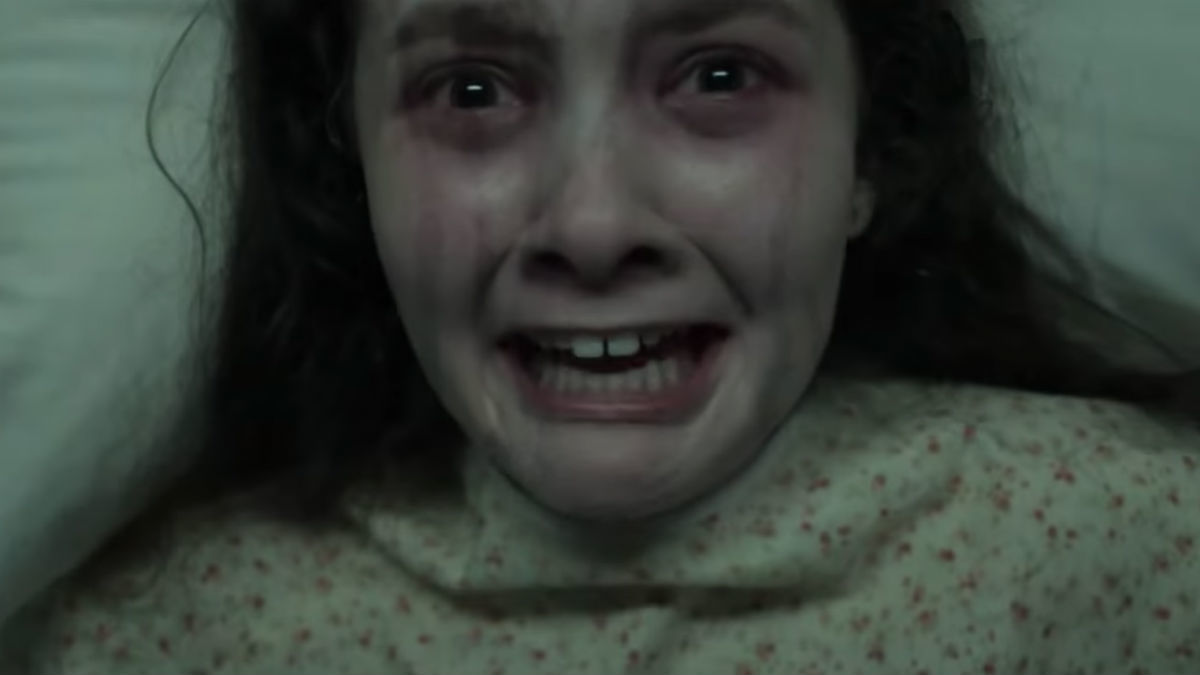Chances are, you've heard of the Slender Man. Whether you're a seasoned internet citizen or just someone who pays attention to major news stories, the internet's favorite urban legend is anything but underground anymore--especially not now, considering he's starring in his very own feature film called--surprise!--Slender Man. But even if you're acquainted with the concept, there's a lot more to the Slender Man myth than you might expect.
The basics aren't so tough to wrap your head around. It started as a post on the SomethingAwful forums back in 2009 by a user named Victor Surge, in a paranormal photoshopping contest. Surge contributed two black-and-white photos where he'd added a tall, faceless man with outstretched arms in the background, alongside ominous Lovecraftian-flavored captions. From there, the internet began taking over. In the popular style of semi-anonymous horror and paranormal fiction forums, users began "corroborating" Surge's stories and images with similar stories and photos, building the fiction out from a vague idea to a fully developed character with a name and signature look. He became a fixture of niche corners of the internet; places dedicated to creepy stories (colloquially called "creepypasta") and unsettling photoshops designed to spook anyone looking for a little adrenaline rush.
After that, however, things get a little tricky. Thanks to the unofficial, mostly anonymous and completely collaborative nature of his early development, changes to the character came and went at random. Some users pictured him as a man in a suit with tentacles sprouting out of his back, others saw him as a creature with multiple arms that made him look like a dead or dying tree. Layers were added about child abductions, murders, and mysterious disappearances that were sometimes well defined and other times exceedingly vague. There was no unified voice and therefore, no real rules--anything could happen at anytime, and bits and pieces of the mythology were folded in and out at will. The Slender Man had become a horror meme on the internet, and so he became a horror meme in fiction as well. Stories began focusing on the idea that if you thought about him too long, or sometimes at all, he would be drawn to terrorize you.
Things began to solidify a bit more in the early 2010s with a boom in original YouTube content set in the constantly shifting Slender Man mythos. Channels like Marble Hornets and EverymanHYBRID created original, found footage stories that reached a wider audience than the message boards and forums, and it garnered a considerable amount of creative control in the evolution of the "canon." Marble Hornets, arguably the first and most popular of the YouTube series, introduced concepts like mental illness and manipulation of "proxies," regular people who were somehow infected with the monster's power, taking the memetic quality of the story one step further--an idea that was promptly adopted and shared among most if not all major Slender Man stories.

Unfortunately, not long after these newer developments, things took a turn for the tragic. In 2014, five years after the character's creation, two twelve-year-old girls in Wisconsin became obsessed with the idea that the Slender Man was real and in order to summon him and become his "proxies," they would need to kill their friend. The case of attempted murder gained national attention and prompted an HBO documentary titled Beware the Slender Man about the victim and her attackers, their relationship with the creepypasta phenomena, and the nature of the Slender Man character as a factor in the assault.
From there, as you might imagine, the connotations of the Slender Man both on and offline became a bit more precarious. The internet's spooky, communal urban legend suddenly had a much broader context for many people who were experiencing the story for the first time--and it was anything but playfully or harmlessly creepy.
At the end of the day, the Slender Man story is a testament to the power of word-of-mouth stories in the digital age and the strange. He's not one character because he's never quite been one character, his stories don't always line up with one another because they've never quite lined up with one another. He's not a traditional Hollywood monster but he's not a traditional urban legend, either--but, hey, maybe he will be soon enough, depending on how well his big screen debut does.
